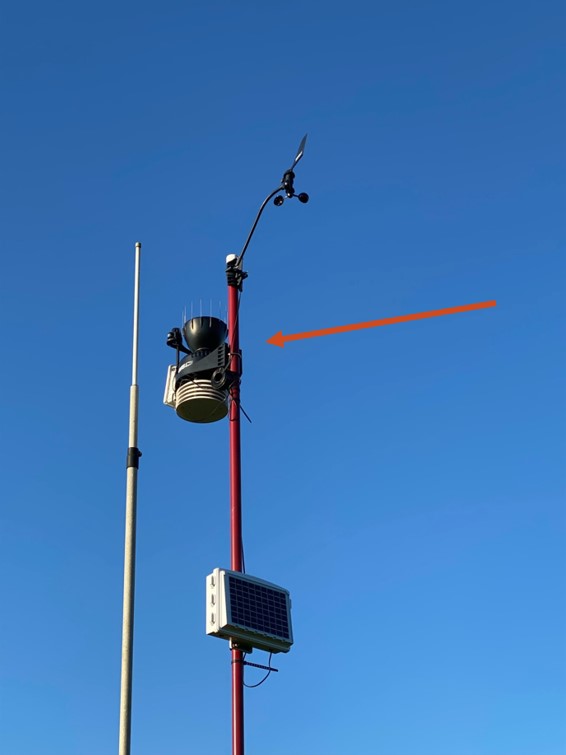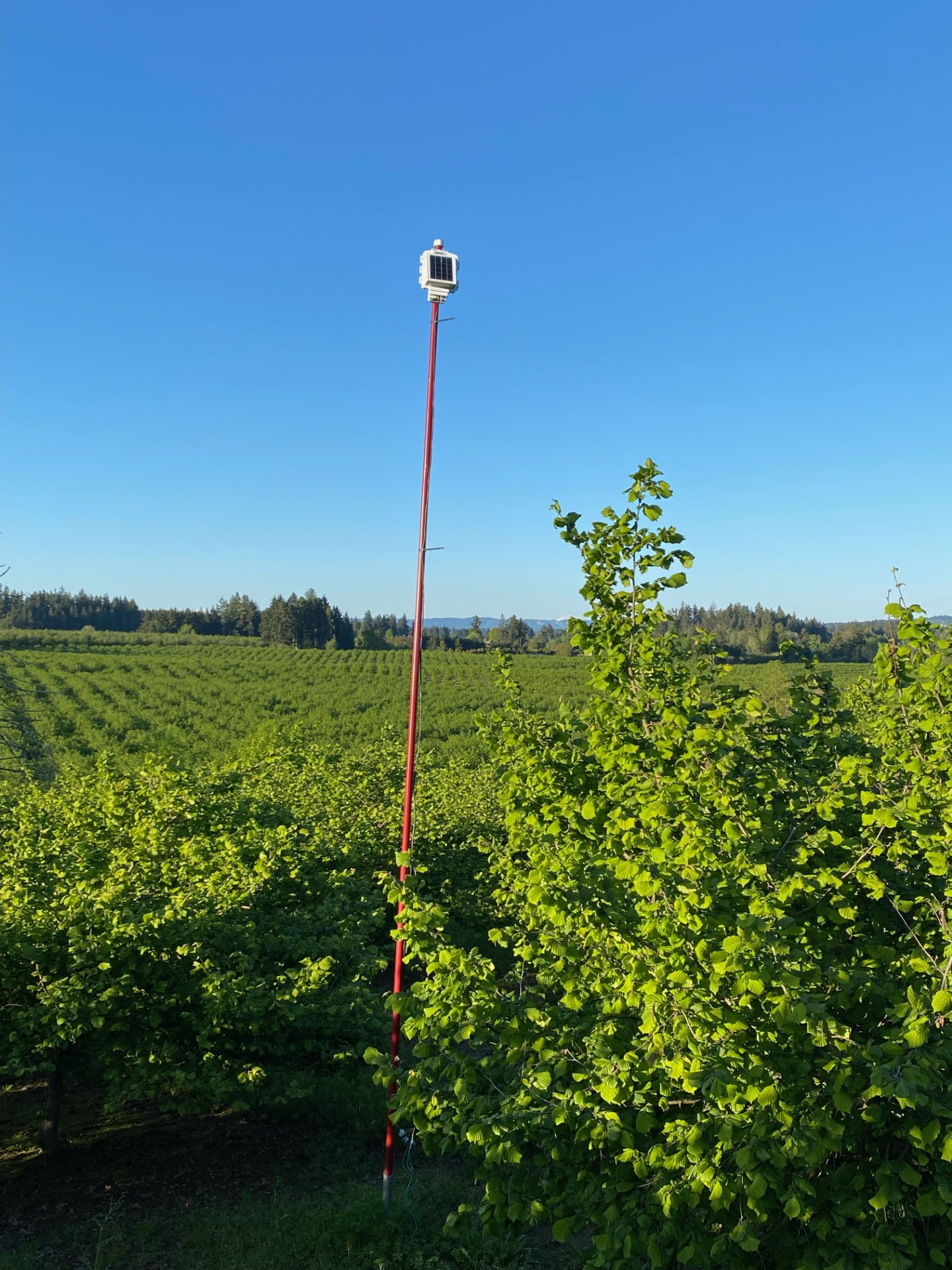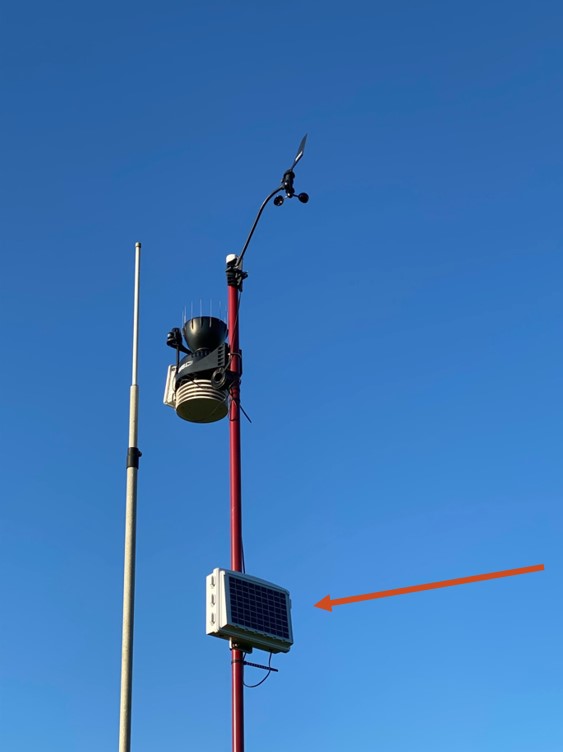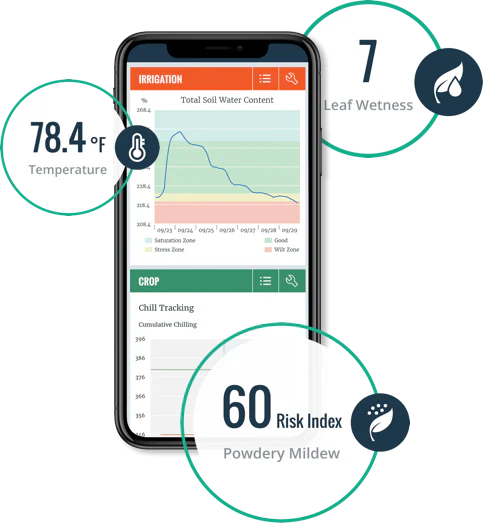Vantage Pro2 GroWeather sensor suite
Our weather stations are engineered to deliver data with scientific precision, year after year, in any environment.
Four Ridge Orchards Inc. in Laurel, Oregon is a 500-acre family farm that’s been operating in various capacities for almost 150 years. Like many growers around the country, fifth generation farmer and operations manager Dan Brown has embraced the challenge of modernizing a business that was largely run on intuition by previous generations.
This growing season, Dan’s taken a big step forward by installing an EnviroMonitor system to help him manage irrigation for his hazelnuts. By deploying weather and soil moisture sensors in the field, he’s been able to reduce water use and save a ton of money on electricity. The best part? The cost of Dan’s system was completely covered by an NRCS Environmental Quality Incentives Program (EQIP) grant.

“We use a well, so there’s an electricity cost associated with pumping. This has created fairly significant savings for us. One thing I really like about the Davis system is the compatibility with such a wide range of sensors. For example, I have a leaf wetness monitor that I still need to install. There’s a lot of interesting data to pull that I haven’t put to its full potential yet.”
Growing nuts requires a great deal of water, and maintaining a profitable orchard means using resources well. Dan’s goal was to know exactly when given sectors of the orchard required water to trigger irrigation and then recognize when the soil was approaching saturation to avoid over-watering.
“It’s so important to time irrigation quantities. Before, we were guessing or just probing soil with a shovel,” he says.
In order to achieve that goal, he required an irrigation monitoring system that would:
Dan and his team needed to make sure their nut trees got all the water they required, but they didn’t want to be wasteful in borderline situations.
To further avoid wasting water, the team required an alarm that would let them know as soon as the soil was sufficiently moist.
As a family-owned farm, Four Ridge needed to minimize costs to protect their overall profitability.
Dan began his crop monitoring pilot with a Vantage Pro2™ GroWeather® Sensor Suite, an EnviroMonitor Gateway, and seven sensor nodes. Each sensor node is fitted with three soil moisture probes, and some nodes monitor soil temperature as well. The nodes are spread out in a grid-like fashion over 70 of his 500 acres to offer hyperlocal insights into moisture variation in the areas where he grows hazelnuts, a water-intensive crop. Here’s how each of those individual pieces delivers value:
Using their GroWeather station, Four Ridge Orchards’ team can monitor temperature, humidity, wind, and rainfall in real time to guide their daily operations or study trends.

Soil moisture probes tell Dan and his team when their trees need water and when the soil is sufficiently wet and they can cut off the flow. Sensor nodes send that data back to the EnviroMonitor Gateway.

The Gateway captures data from the various sensors around Four Ridge Orchards and sends the data to the cloud via cellular network for viewing and analysis in the Mobilize app.

The Mobilize app enables Dan and team to check environmental conditions from their weather station and soil sensors at any time from their mobile device. It’s also where they can configure custom alarms that trigger action based on certain conditions.

Dan purchased and maintains Four Ridge Orchards’ EnviroMonitor system at almost no cost thanks to a grant from the USDA’s Natural Resources Conservation Service (NRCS). Their Environmental Quality Incentives Program (EQIP) provides technical and financial assistance to agricultural producers and forest landowners to address natural resource concerns.
For farmers and growers, the EQIP program offers individualized grants to fund projects that help solve on-farm resource issues, like use of water. That’s how Dan was able to secure funding to rapidly modernize his family farm with an in-field monitoring system.
“Local NRCS offices are woefully under-utilized, and they’re looking for people to use their services. Their funding rates are pretty good,” Dan explains. “Contact your local NRCS office, tell them you want to do soil moisture monitoring, and they’ll help you apply. If you qualify, you’ll get funded, and you can transition toward researching and selecting the right system.”
EQIP grants are a highly collaborative process between the NRCS and each individual farmer that applies. To earn the grant, farmers and NRCS reps must develop a custom conservation plan that outlines specific practices and technologies that will lead to cleaner water or air, healthier soil, or better wildlife habitat. The goal is always for conservation to work for the grower, meaning that the program isn’t just funding environmental initiatives; it’s helping farmers improve operations.
If you need help building a field monitoring system, AEM is here to help! Sign up now for a free EnviroMonitor consultation, and one of our agriculture specialists will help you start scaling your pilot and exploring funding options.